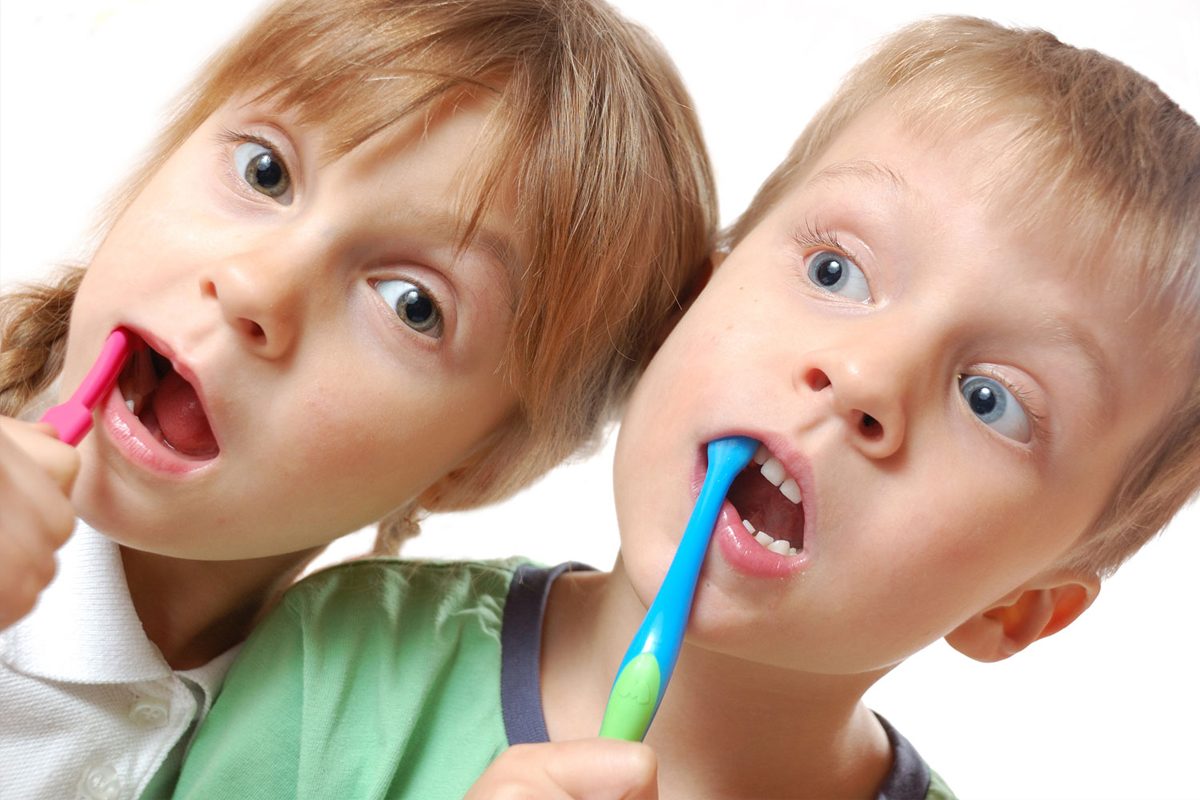Bedtime routines differ slightly from family to family, but all include brushing those pearly whites.
Most kids run into the bathroom to brush their teeth by themselves, seeming parents usually don’t micromanage this mundane task.
But when the children come out of the bathroom only moments later with toothpaste covering their mouth, it does make you wonder what really went on in there.
Come to find out, most kids don’t brush their teeth properly, using an abundance of toothpaste for the few seconds the toothbrush is in their mouth.
The Center for Disease Control (CDC) has just put out a new report that detailed findings on how and when children are brushing their teeth.
It is recommended by the CDC that a tooth brushing regimen should begin at the first sign of a tooth, about 6 months old.
You don’t need to pry the baby’s head open, scrubbing his single knob for two minutes with a full-size toothbrush, but gently massaging what little tooth he has with a baby toothbrush for a few moments; this will get him ready for the real thing.
Experts recommend the first dental visit to be at one year of age, ensuring brushing practices are correct and there are no issues with tooth development.
While parents know the importance of encouraging children to brush their teeth, not much thought goes into how much toothpaste should be used when doing it.
When a child (and some adults too) puts toothpaste on their toothbrush, they squeeze the tube in a hurry, covering the whole toothbrush, and then some.
Apparently, this is all wrong!
The CDC report wrote that children 2-3 should be using only a “smear” of toothpaste the size of a grain of rice, and children 3-6 should use no more than a “pea-sized” amount.
Any more than the recommended amounts could pose a health problem from the fluoride contained in most toothpaste.
Older kids are not as big of a concern, because their swallowing reflex has developed enough not to ingest the toothpaste, according to the CDC.
From the first tooth until the age of two fluoride toothpaste is not recommended. As all moms know, they will just “eat” whatever you put in their mouth at this age, and toothpaste is not on the menu.
In the survey the CDC conducted on toothbrushing practices in children, it was discovered that almost 80% of kids didn’t start brushing their teeth until after one, a third only brushed once a day, and “nearly 40% of children 3-6 years used too much toothpaste.”
Fluoride, an element found in rock, has been a pivotal component to the reduction of dental caries in the United States since the 40’s.
However, it is warned that too much fluoride is detrimental to teeth if used in excess, creating discoloration and pits.
Almost every dental association- including the American Academy of Pediatrics (AAP), American Academy of Pediatric Dentistry (AAPD), and American Dental Association (ADA) – recommends all persons over the age of two to use toothpaste with fluoride in it, and to drink water that has been supplemented with it.
This is despite research showing that “Countries that do not fluoridate their water have also seen big drops in the rate of cavities,” according to Harvard Public Magazine.
If the CDC warns against the ingestion of fluoride, then should we be drinking it as well?
Research has shown that there are dangers lurking in the use of excessive fluoride beyond dental issues.
Harvard School of Public Health (HSPH) found through brain studies that fluoride exposure in children causes neurological damage, and hinders development.
Children who were living in “high-fluoride” areas had “significantly lower IQ than those in low fluoride areas.”
Yikes!
Authors of the ground-breaking Harvard study say that the “risk should not be ignored, and that more research on fluoride’s impact on the developing brain is warranted.”
Fluoride has been added to water supplies throughout the United States for nearly 80 years, causing unknown long-term effects on countless people – albeit cavity free people.
Kids overusing toothpaste – which we now know almost all of them do – puts them at risk for toxic levels of fluoride, so increased doses from water would seem to do harm.
Even the US Department of Health and Human Services recommended a decrease in fluoride levels in community water as new research shed light on pending dangers.
Grandjean, a Harvard researcher, said “Fluoride seems to fit in with lead, mercury, and other poisons that cause chemical brain drain.” He warns that damage on a “population scale” could be serious.
Thankfully, there are options. You can buy fluoride-free toothpaste, or make your own toothpaste from harmless ingredients, as Mommy Underground has previously reported.
Filters for your drinking water in the home can help protect against excess fluoride as well if you want to limit as much of the element as possible.
If you do use fluoridated toothpaste with your children, make sure you are supervising how much toothpaste is being used and ensure they don’t swallow it.
Having routine dental hygiene practices is a must for everyone in the family, including toothbrushing at least two times a day and flossing, but it can be done in a way that limits exposure to harmful poisons.
Please let us know in the comments section if you have any hacks for your children’s dental hygiene.

